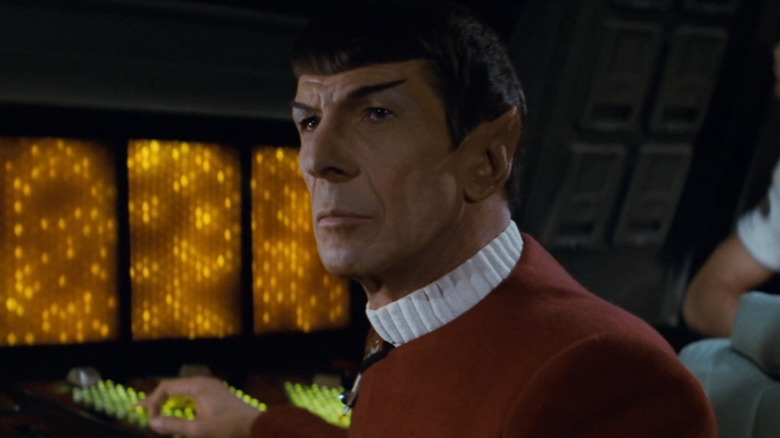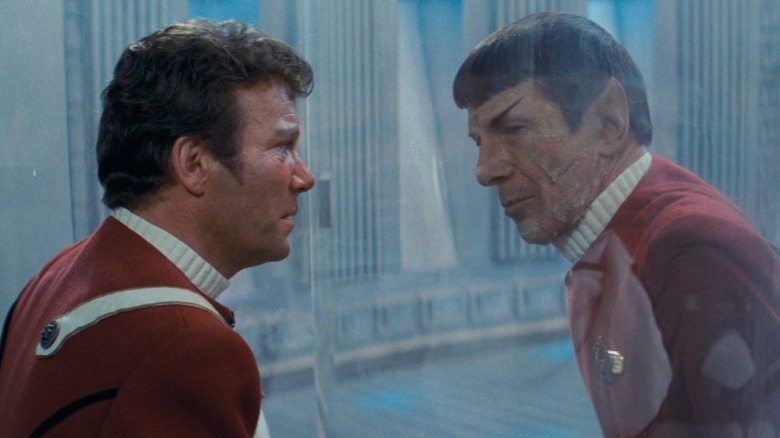What Is Spock Fixing In Star Trek II: The Wrath Of Khan & Why Does It Matter?
Ask any Trekkie what the pinnacle of Star Trek movies is, and they'll undoubtedly tell you it's "Star Trek II: The Wrath of Khan." It's easy to see why; the sci-fi classic is simply packed with iconic moments, from the film's iconic villain Khan, portrayed spectacularly by Ricardo Montalbán, to Spock's (Leonard Nimoy) heroic sacrifice.
Spock's shocking death occurs when he goes to repair the Enterprise's warp drive in the engine room, which contains a lethal amount of radiation. Toward the end of "Star Trek II: The Wrath of Khan," the ship's crew needs to escape a nebula before it explodes. They can only get far enough away by activating the warp drive, which is broken at the time, and the engine room is completely toxic, preventing any human from fixing it. However, as a Vulcan, Spock goes in to repair it since he can last longer. He succeeds, with the Enterprise managing to get away from the explosion, but it costs Spock his life.
Spock's sacrifice stunned "Star Trek" fans, and he stays true to his character until the very end, insisting it was the most logical move. This leads to one of the most emotional moments in the entire franchise when Kirk (William Shatner) can only watch as his friend dies. It was significant for the movie to kill off such a major character even if he comes back, and it set the stage for the next cinematic Star Trek outing — "Star Trek III: The Search for Spock."
Wrath of Khan and Spock's death helped get Star Trek back on track
In 1979, "Star Trek: The Motion Picture" didn't exactly have a critically sound reception. "Star Trek II: The Wrath of Khan" was a shot at redemption, which Leonard Nimoy realized after the fact. Speaking with TrekMovie.com in 2009, Nimoy stated how "Wrath of Khan" kicked off a new era for the franchise. "The second one put us back on track and what happened, unintentionally, we didn't realize that we were at the beginning of a trilogy," he explained. "That the three films, II, III and IV, told a story that had [an] arc." Spock going to fix the warp drive and dying in the process is what kicks off the remainder of that trilogy.
As suggested by the title, "Star Trek III: The Search for Spock" sees the return of the Vulcan, with him becoming resurrected by the end. The storyline carries over into "Star Trek IV: The Voyage Home," where Spock continues recovering from being brought back to life. He's also the one to figure out a threatening probe is sending out a signal reminiscent of songs sent by humpback whales, which have since gone extinct. Spock's journey is pivotal throughout all these films, and even when he's not physically present, he's still influencing the story. And it all goes back to him fixing the warp drive to save his friends.
Spock's death is one of the most memorable scenes in sci-fi history. Even if it didn't set up future films, it would be significant for that reason alone.

